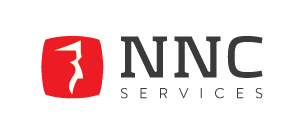Tracking Users Across the Web - What You Need to Know
By B2B Marketing, conversion tracking
In today's digital world, website tracking has become an essential part of digital marketing strategies for businesses. Tracking users' behavior on websites can provide valuable insights into customer preferences and help businesses improve their online presence. However, website tracking also raises concerns about privacy and data protection. In this article, we will explore website tracking, its benefits, web tracking methods, legal considerations, compliance measures, and the best website tracking tools.
What Is Website Tracking?
Website tracking refers to the process of collecting data about user behavior on a website or an application. Website tracking tools are used to gather data such as the number of visits, the pages visited, the duration of the visit, and the actions are taken on the site. This data is used to analyze user behavior and improve the user experience.
Benefits of Tracking Users
Website tracking offers several benefits for businesses, including:
-
Understanding Customer Behavior: Tracking user behavior can help businesses understand what customers are looking for on their websites. By analyzing this data, businesses can identify areas that need improvement and optimize their site for better user experience.
-
Personalization: Tracking user behavior can also help businesses personalize their marketing efforts. By understanding what customers are interested in, businesses can offer relevant products, services, and promotions.
-
Conversion Optimization: Tracking user behavior can help businesses identify barriers to conversion and optimize their site for better conversions.
Web Tracking Methods
There are several methods used for website tracking. These methods include:
-
Cookies: Cookies are small text files that are stored on a user's device when they visit a website. Cookies can be used to track user behavior, such as the pages visited and the duration of the visit. Cookies can also be used to store user preferences, such as language and currency.
-
Cache: Cache refers to the temporary storage of data on a user's device. Cached data can include images, scripts, and other website resources. This data can be used to track user behavior and improve website performance.
-
Local and Session Storage: Local and session storage refer to the storage of data on a user's device. This data can be used to track user behavior and store user preferences.
-
Canvas Fingerprinting: Canvas fingerprinting is a method of tracking users based on the unique characteristics of their device. This method can be used to track user behavior across multiple websites.
-
Audio Fingerprinting: Audio fingerprinting is a method of tracking users based on the unique characteristics of their device's audio hardware. This method can be used to track user behavior across multiple websites.
-
Performance Fingerprinting: Performance fingerprinting is a method of tracking users based on their device's hardware and software characteristics. This method can be used to track user behavior across multiple websites.
-
Basic System and Internet Connection Information: Basic system and internet connection information can be used to track user behavior. This information includes the user's IP address, operating system, and internet service provider.
Is Website User Tracking Illegal?
Website user tracking is not illegal. However, there are legal considerations that businesses must take into account when tracking users on their websites. Businesses must ensure that they are transparent about their data collection practices and obtain user consent where required.
Data Privacy Regulation on Website Activity Tracking
Data privacy regulations such as the General Data Protection Regulation (GDPR) and the California Consumer Privacy Act (CCPA) require businesses to be transparent about their data collection practices and obtain user consent where required. These regulations also require businesses to allow users to opt out of data collection.
How To Track Website Visitors and Be Compliant
To track website visitors and be compliant with data privacy regulations, businesses should:
-
Get Consent: Before tracking any user data, it's important to obtain consent. Clearly inform users that you will be tracking their data and provide them with an option to opt out.
-
Limit Data Collection: Only collect the data that is necessary for your business needs. Collecting excessive data can raise concerns and result in non-compliance with regulations.
-
Anonymize Data: To protect user privacy, consider anonymizing the data you collect. This means removing personally identifiable information such as names and email addresses.
-
Use Secure Tools: Ensure that the tools you use to track user data are secure and comply with data protection regulations. Look for tools that are GDPR compliant or have received similar certifications.
-
Keep Data Secure: Once you've collected user data, it's important to keep it secure. Use encryption and secure storage solutions to protect user data from unauthorized access.
By following these tips, you can track website visitors while maintaining compliance with data privacy regulations. Remember, respecting user privacy is essential to building trust and maintaining a positive reputation for your business.

What Are the Best Website Tracking Tools
Now that you know what website tracking is, how it can benefit your business, the different tracking methods available, and the legal and compliance considerations to keep in mind, it’s time to explore some of the best website tracking tools on the market.
Google Analytics
Google Analytics is arguably the most popular website tracking tool available today. It’s a free web analytics service that allows you to track and analyze website traffic data, user behavior, and more. With Google Analytics, you can get insights into where your website visitors are coming from, what pages they’re visiting, how long they’re spending on your site, and much more.
Google Tag Manager
Google Tag Manager is a free tool that allows you to easily manage all your website tags without having to modify code. You can use it to track user behavior, conversion rates, and more. With Google Tag Manager, you can create and manage tags that track events such as clicks, downloads and form submissions. It also integrates seamlessly with Google Analytics, making it a powerful tool for tracking and analyzing website data.
Hotjar
Hotjar is a behavior analytics and user feedback tool that allows you to track user behavior on your website. With Hotjar, you can track where your website visitors are clicking, scrolling, and hovering on your site. It also includes features such as heat maps, visitor recordings, and surveys that can help you better understand your users and improve their experience on your website.
Crazy Egg
Crazy Egg is another website tracking tool that provides heat map and click-tracking analytics. It’s a powerful tool that allows you to see where users are clicking on your website and how they’re navigating through your site. It also provides other useful features such as A/B testing and user session recordings.
Kissmetrics
Kissmetrics is a user behavior analytics and engagement platform that provides real-time insights into user behavior on your website. It allows you to track user behavior throughout the entire customer journey, from the first click to the final conversion. With Kissmetrics, you can track how users are interacting with your website, how they’re engaging with your content, and how they’re moving through your conversion funnel.
Conclusion
Website tracking can provide valuable insights into your users’ behavior, which can help you improve their experience on your site and increase your conversion rates. However, it’s important to keep in mind the legal and compliance considerations, such as data privacy regulations, to ensure that your tracking practices are in line with industry standards and regulations.
Latest Posts
Categories
- B2B Marketing (194)
- blog (147)
- Social media marketing (69)
- social media (53)
- Digital Marketing (43)
- Marketing (42)
- Lead Generation (39)
- Marketing Strategy (35)
- Lead Generation (33)
- B2B (30)
- Press releases (27)
- Behind the Scenes (26)
- marketing automation (26)
- Content Marketing (25)
- Marketing (21)
- Strategy (21)
- b2b tactics (19)
- AI (18)
- AI Marketing (18)
- b2b business objectives (17)
- online marketing (17)
- SEO (16)
- content marketing (15)
- B2B Campaigns (14)
- Business Growth (14)
- Business continuity (14)
- google ads (14)
- B2B Blogging (13)
- B2B business (13)
- PR Communication (13)
- b2b lead generation (13)
- PPC (12)
- b2b strategy (12)
- Marketing News (11)
- Marketing Planning (11)
- Social Media Strategy (11)
- marketing tips (11)
- B2B PPC Campaign (10)
- Conversion Rate (10)
- Employer Branding (10)
- Marketing Automation Tool (10)
- b2b social media (10)
- White papers (9)
- artificial intelligence marketing (9)
- inbound marketing (9)
- B2B companies (8)
- B2B email marketing (8)
- Fractional CMO (8)
- Twitter (8)
- crisis management (8)
- marketing automation for B2B businesses (8)
- online PR (8)
- ABM Strategy (7)
- E-books (7)
- Email Marketing (7)
- Facebook (7)
- HubSpot (7)
- Pinterest (7)
- SEO trends (7)
- b2b sales (7)
- content strategy (7)
- marketing plan (7)
- social networks (7)
- Business Development (6)
- CMO (6)
- Lead Generation Trends (6)
- Marketing Trends (6)
- SEO Strategies for B2B Companies (6)
- Webinar Recording (6)
- artificial intelligence (6)
- marketing objectives in b2b (6)
- sales prospecting (6)
- social media marketing campaign (6)
- social media trends (6)
- technology marketing (6)
- Business Intelligence (5)
- Digital Transformation (5)
- Events (5)
- Facebook page (5)
- Google AdWords (5)
- IT (5)
- Instagram (5)
- KPI measurements (5)
- Landing Page (5)
- LinkedIn (5)
- LinkedIn marketing strategy (5)
- Marketing Management (5)
- Video Content (5)
- automated marketing (5)
- b2b best practices (5)
- b2b prospecting (5)
- b2b strategies (5)
- digital communication strategy (5)
- internationalisation (5)
- marketing automation systems (5)
- trends (5)
- B2B marketing campaigns (4)
- B2B marketing inbound (4)
- Business Strategy (4)
- Cost per Lead (4)
- Digital Influence (4)
- HubSpot Certified Agency (4)
- NNC Services (4)
- Paid Advertising (4)
- Tech Startup (4)
- Tech Startup Marketing Strategy (4)
- Uncategorized (4)
- Video Marketing Strategy (4)
- b2b sales plan (4)
- best practices during crisis (4)
- brand engagement (4)
- leading marketing automation tools (4)
- market entry (4)
- marketing content (4)
- personal branding (4)
- proactive marketing (4)
- ABM sales outreach (3)
- Agile Marketing (3)
- B2B Email Marketing Campaigns (3)
- B2B Marketing Budget (3)
- B2B digital agency (3)
- B2B marketing strategy inbound (3)
- Conversion Rate Optimization (3)
- Financial (3)
- Google Analytics (3)
- Google+ (3)
- Internal Marketing (3)
- Lead Gen Automation Tools (3)
- Linkedin Groups (3)
- Marketing Automation Migration (3)
- Online Events (3)
- Pardot (3)
- Pardot to HubSpot Migration (3)
- Product Marketing (3)
- SMB international Business Models (3)
- Search Engine Optimization (3)
- Tech (3)
- Webinar (3)
- abm (3)
- b2b blogging (3)
- b2b customer aquisition (3)
- b2b growth (3)
- barriers to entry (3)
- blogging (3)
- business plan (3)
- buyer persona (3)
- customer research (3)
- demand generation (3)
- doing business abroad (3)
- employer brand (3)
- employer branding strategy (3)
- inbound leads (3)
- marketing audit (3)
- marketing automation strategy (3)
- marketing leadership (3)
- marketing portfolio audit (3)
- omnichannel marketing (3)
- online communities (3)
- online demand (3)
- outsourcing (3)
- prospects (3)
- storytelling (3)
- tech business (3)
- visual content (3)
- website optimization (3)
- 4P’s (2)
- B2B Contacts (2)
- B2B Marketing Collaterals (2)
- B2B presentations (2)
- Channel Integration (2)
- Customer-Centric (2)
- DIY business (2)
- E-Commerce (2)
- Facebook content (2)
- Go-to-Market Strategies (2)
- Hubspot Inbound (2)
- Hubspot Portal audit (2)
- Hubspot marketing portal (2)
- IT recruitment (2)
- Innovation (2)
- Integrated Marketing (2)
- Internship (2)
- Marketing Metrics (2)
- Microsoft Dynamics (2)
- PPT (2)
- Pay-per-Click (2)
- ROI (2)
- RevOps (2)
- SMART (2)
- SMB (2)
- SME (2)
- Sales Automation (2)
- Sales Automation Tools (2)
- Salesforce (2)
- Telemarketing (2)
- Tumblr (2)
- action plan (2)
- b2b planning (2)
- b2b tradeshow (2)
- b2b video marketing (2)
- banking (2)
- business communities (2)
- business management (2)
- buyer journey (2)
- buyer motivation (2)
- celebrities (2)
- client presentations (2)
- company marketing (2)
- company presentation rules (2)
- context marketing (2)
- conversion tracking (2)
- copywriting (2)
- corporate presentations (2)
- data driven (2)
- eCommerce Marketing (2)
- employee value proposition (2)
- employer value proposition (2)
- entertainment industry (2)
- entrepreneurs (2)
- free marketing tools (2)
- fundraising (2)
- gdpr (2)
- how to present in front of customers (2)
- how to write a presentation (2)
- marketing investing (2)
- marketing outsourcing (2)
- marketing segmentation (2)
- marketing upskilling (2)
- networking communities (2)
- nonprofits (2)
- online strategies (2)
- outbound marketing (2)
- outsourced marketing (2)
- ppc ads (2)
- ppc management (2)
- ppc strategy (2)
- presentation structure (2)
- product audit (2)
- product portfolio (2)
- promotion (2)
- sales enablement (2)
- sales funnel (2)
- segmentation (2)
- service marketing (2)
- slideshows (2)
- social platform (2)
- succes management (2)
- supporters (2)
- targeting (2)
- tourism industry (2)
- tradeshow attendance (2)
- tradeshow objectives (2)
- tradeshow results (2)
- tradeshow strategy (2)
- webinar tips (2)
- 2014 (1)
- ActiveCampaign (1)
- Ad Rank (1)
- AdidasOriginal (1)
- Android (1)
- B2B Case Study (1)
- B2B Digital Training (1)
- B2B SaaS startup strategy (1)
- B2B SaaS success factors (1)
- B2B content marketing trends (1)
- B2B e-mail copy (1)
- B2B e-mail marketing (1)
- B2B lead generation on LinkedIn (1)
- B2B marketing creative trends (1)
- B2B marketing on LinkedIn (1)
- BWBB (1)
- Blockchain (1)
- Blockchain Technologies (1)
- CTA button (1)
- Design Thinking Model (1)
- Direct Marketing (1)
- Dreamforce 2017 (1)
- Drip Marketing Campaign (1)
- Dynamics 365 (1)
- Dynamics 365 marketing (1)
- Dynamics Marketing (1)
- Eastern Central Europe (1)
- Eastern Europe (1)
- Emotional B2B Marketing (1)
- Employee Feedback (1)
- Event management (1)
- External Marketing (1)
- Facebook Apps (1)
- Facebook marketing (1)
- Freemium SaaS (1)
- Go-to-Market (1)
- Google Ad Grant (1)
- Google Ads statistics (1)
- GoogleAdGrant (1)
- HR planning (1)
- Hubspot Outbound (1)
- IT marketing (1)
- IT outsourcing (1)
- IT service price (1)
- Intel (1)
- LeadGeneration (1)
- LinkedIn B2B marketing (1)
- LinkedIn for business growth (1)
- Machine Learning (1)
- Market Entry Strategy (1)
- Market Research (1)
- Marketing Results (1)
- Marketing frameworks (1)
- Marketing vs Sales (1)
- Marketo (1)
- Medium Companies (1)
- Microsoft Dynamics 365 (1)
- NGO (1)
- Networking (1)
- Organizational culture (1)
- PPC statistics (1)
- PPC stats (1)
- Personalized messages (1)
- Pictures (1)
- Podcast SEO (1)
- Price (1)
- Recruitment Marketing (1)
- Revenue operations (1)
- Romanian content marketers (1)
- SaaS (1)
- SaaS startup growth (1)
- Salesforce Partners (1)
- SharpSpring (1)
- Small Business (1)
- Social Proof (1)
- StopWar (1)
- Tactics (1)
- Target (1)
- Tech events (1)
- Template (1)
- Till Hahndorf (1)
- Types of Google Ads (1)
- Ukraine (1)
- VirginAmerica (1)
- Voice Search SEO (1)
- Work alternative (1)
- Youtube Ads (1)
- ads setting (1)
- app (1)
- artists (1)
- b2b benchmark (1)
- b2b buyer (1)
- b2b buying process (1)
- b2b buying trends (1)
- b2b customers (1)
- b2b marketing vs sales (1)
- b2b modeling (1)
- b2b price (1)
- b2b viral campaign (1)
- benghmarking (1)
- best practices for B2B marketing on LinkedIn (1)
- brand advocates (1)
- business (1)
- business growth course (1)
- buyer behaviour in b2b (1)
- buyer persona template (1)
- buyers (1)
- call to action (1)
- clients (1)
- cold-calling (1)
- company (1)
- competition (1)
- creative marketing strategies for B2B (1)
- customer segmentation (1)
- cybersecuritystrategy (1)
- dan schawbel (1)
- detailed buyer persona (1)
- differentiators (1)
- downloadable resources (1)
- e-mail campaigns (1)
- e-mail message and copy (1)
- employer brand experience (1)
- employer of choice (1)
- environmental marketing (1)
- fans (1)
- gdpr benefits (1)
- gdpr benefits for marketing (1)
- go-to-market channels (1)
- green marketing (1)
- growth marketing (1)
- hotel (1)
- how to find leads (1)
- how to sell (1)
- how to use LinkedIn for B2B marketing (1)
- human resources (1)
- iOS (1)
- inbound marketing services (1)
- inbound marketing vs outbound marketing (1)
- international business (1)
- investment in marketing (1)
- investors (1)
- jamie oliver (1)
- lead generation results (1)
- leads (1)
- letter writing (1)
- like (1)
- market price (1)
- marketing benchmarking (1)
- marketing flywheel (1)
- marketing goals (1)
- marketing investments (1)
- marketing letters (1)
- marketing message (1)
- marketing objectives (1)
- marketing strategy for 2022 (1)
- mobile (1)
- mobile marketing (1)
- music (1)
- new business opportunities (1)
- online reputation (1)
- peak-end rule in B2B marketing (1)
- personal branding tips (1)
- personell issues (1)
- photos (1)
- podcast (1)
- positive employer brand (1)
- ppc click fraud (1)
- price debate (1)
- price negociation (1)
- pricing (1)
- pricing stratey (1)
- product cost (1)
- product price (1)
- promote (1)
- publicity vs persuasion in B2B marketing (1)
- recession tactics (1)
- roadmap (1)
- sales (1)
- script (1)
- seo practices (1)
- service price (1)
- services (1)
- setting objectives (1)
- setting the price (1)
- smart bidding (1)
- social channels (1)
- social media for B2B thought leadership (1)
- social networking (1)
- social recruitment (1)
- startup (1)
- subscribers (1)
- sustainability (1)
- tailored experience (1)
- talent pool (1)
- tech hub (1)
- tech professionals (1)
- thought leadership content (1)
- thought leadership on social media (1)
- tools (1)
- updates (1)
- using characters in B2B advertising (1)
- viral campaignes (1)
- viral marketing (1)
- viral videos (1)
- visual (1)
- voice search optimization (1)








.png?width=100&name=cover%20blogposts%20sm%20website%20(6).png)

.png?width=767&name=cover%20blogposts%20sm%20website%20(4).png)
.png?width=767&name=cover%20blogposts%20sm%20website%20(1).png)

.png?width=767&name=Blog%20image%20%5BFractional%20AI%5D%20(6).png)
.png?width=767&name=Blog%20Post%20(16).png)
.png?width=767&name=Blog%20Post%20(8).png)
.png?width=767&name=Blog%20Post%20(7).png)
-2.png?width=767&name=NNC%20Blog%20featured%20image%20(13)-2.png)



